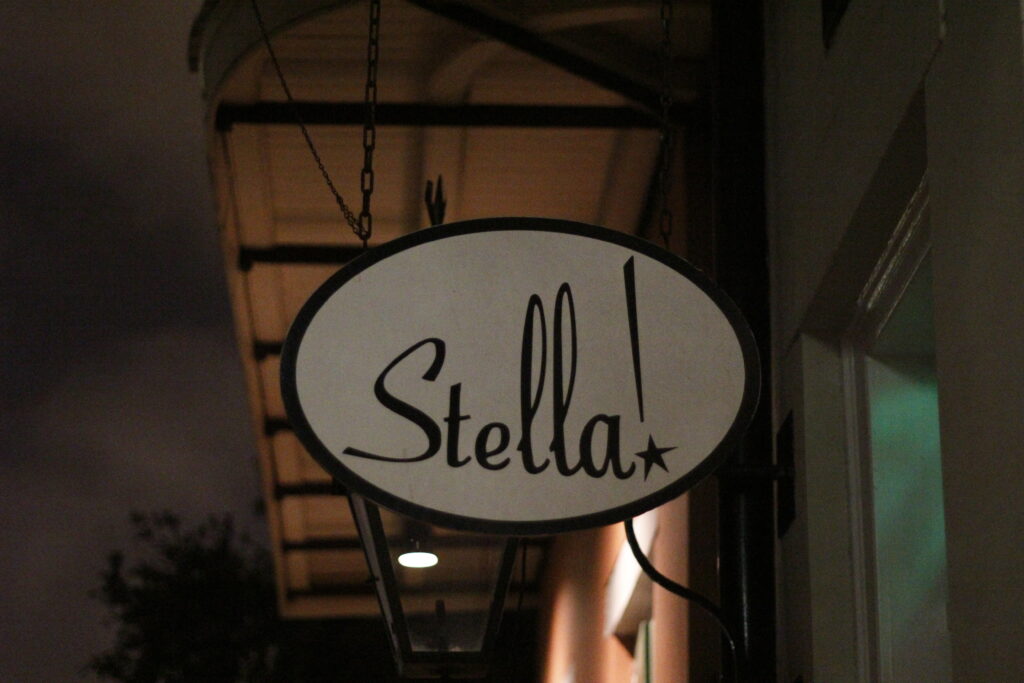MarComm- or, a summary of why I am here.

Connecting through Communication
Picture this: a multi-talented, digital media, marketing communications specialist, instructional developer, and lover of data with a track record of spearheading digital marketing initiatives and delivering top-notch training programs. That’s me! I’m a master strategist with a flair for creativity in digital media and a passion for communication and education. It’s my innovative thinking and unique skillset that have consistently produced outstanding results. And now, I’m thrilled to bring my talents and experience to your organization, where I’m confident I can make an impact that will be felt for years to come.
Communications and Instructional Design: Simplifying Complex Information
Embarking on my journey into marketing communications, I quickly saw that success wasn’t just about generating interest – it was about driving engagement and delivering results within the confines of a budget. I knew that I needed to think strategically, not just creatively, to get the right people in front of the experts who could solve their problems and guide them along the buyer’s journey. My Marketing Communications mission became clear: to balance the art of captivating audiences with the science of delivering ROI.
As an Instructional Designer, I’ve come to realize the parallels between my role and that of a Communications professional. Both roles require the ability to explain complex information in a format that the intended audience can easily understand.
Whether it’s designing a training module or creating a communication plan, the goal is the same: to make sure the message is received and understood. As an Instructional Designer, I use a variety of techniques to create effective learning experiences, from breaking down complex concepts into smaller pieces to creating interactive scenarios that encourage learners to engage with the content.
Similarly, in a Communications role, it’s all about finding the right medium to convey the message. This might involve writing clear and concise copy, creating engaging visuals, or using social media to connect with the target audience.
Both roles require a deep understanding of the audience and their needs. For example, if I’m designing a training module for a group of engineers, I need to make sure I’m using language and concepts that are familiar to them. In a Communications role, it’s important to understand the target audience’s interests and preferences in order to create content that resonates with them.
Another important similarity between these two roles is the need to adapt to changing situations. As an Instructional Designer, I’m constantly re-evaluating the effectiveness of my training modules and making changes as needed. Similarly, in a Communications role, it’s important to be flexible and able to adjust the message based on feedback from the target audience.
In both roles, it’s also important to be creative and think outside the box. Whether it’s designing a new interactive scenario for a training module or coming up with a new way to engage with customers on social media, both roles require a willingness to try new things and take risks.
Ultimately, the goal of both a Communications professional and an Instructional Designer is to effectively communicate information to the intended audience. While the methods and techniques may differ, the underlying principles are the same: to create engaging, informative content that helps the audience better understand the topic at hand.
Digital Media
When crafting this social media engagement piece, my goal was to strike a balance between brevity and clarity. I knew that attention spans are short-lived and that lengthy paragraphs can overwhelm even the most curious of viewers. At the same time, being too vague can result in low engagement rates and missed opportunities to connect with the right audience. That’s why I opted for a short-and-sweet approach, conveying a powerful message in just a few words. Simply put, this piece highlights how data from multiple verticals can seamlessly flow into an MQTT broker and be stored in data lakes in the cloud with minimal effort. It’s concise, informative, and easy to understand – everything a successful social media post should be.
The same interest in continuing with that low volume approach – but state the current marketplace issues of supply chain. Sometimes marketing communications engagement can come from discussing high-level concepts, even if the details are complex. What I wanted to convey in this video was that even the most granular data points, which may seem outside of a producer’s control, can be harnessed to take direct action and prevent bottlenecks before they happen. In other words, we can use this data to proactively solve problems and optimize the supply chain.
To build on my low-volume approach, I am still using simple isometric images to represent multiple verticals that share common pain points. My aim is to keep the ,marketing communications messaging straightforward by highlighting the benefits, while also touching on the common issues faced in a data isolation sector.
Exploring the intricate world of digital media engagement can be both fascinating and challenging. As a marketer, I’ve experimented with different approaches to create effective messages that resonate with my target audience. However, it’s not always as simple as “less is more” or “more is less.” It’s a delicate balance that requires nuance and creativity.
As I craft my messages, I rely on my artistic intuition to envision the perfect marketing communication strategy. Yet, as with any collaborative project, stakeholders often bring their own perspectives to the table. This can be a blessing or a curse, as I may need to adjust my creative vision to align with their viewpoints.
Despite the complexities of digital media engagement, I remain passionate about finding the perfect message that will capture my audience’s attention. In the next few samples, I invite you to join me on this exciting journey of discovery.
That is a piece for branding on a homepage. It has great clean footage, nice music to illicit a tonality to it. Stunning facts to interest the viewer. Honestly, it felt good to create content that I didn’t have to create all the way from scratch. This was a budget piece though. Stock footage and music were all included from the beginning storyboards. The only piece that was hand animated was the satellite, as there is hardly any stock footage of that available. For an internal facing video for social media engagement – see here: https://vimeo.com/811809588
Engagement reusability. That’s more of what I need to produce. Create marketing communications content that drives engagement, but is reusable also. The stakeholder on this piece really wanted simple messaging that I had used previously, but also to be able to change the scape of the message as more pain points were unveiled. So, this is one of many that had a factory animation that was segmented for each pain point.
Clean. Create content that is clean, explains to the user the ease of use, secret sauce, and benefits of a product. In full without being full pitch. One of the interesting understandings that I had to learn, was that the audience wasn’t always the decision maker. Sometimes it was the end user, who would then become the advocate. Another element that took importance in shaping how I learned to communicate.
This piece was made specifically to support a multiple front engagement campaign. First, it was to drive traffic to an article that was resurfaced and showcased on the brand website. It was then also used in promotion at a tradeshow on a booth panel television for eye-capture. The video was also used in promotion of a whitepaper that explained in detail the use-case the product was built and used for. Also, unlike the earlier live-action footage piece, this video was made for no cost with attributions only from stock footage and music. To me, it truly felt like marketing communications engagement content.
Aramis Media is my journey
I am sure by now, you might have tried to correlate the name of my website: Aramis Media to me. Its always been about the French.

From a young age, The Three Musketeers captivated me, and the complex character of Aramis was a large part of that. Aramis was not just a skilled swordsman and loyal friend to his fellow musketeers, but also a deeply spiritual man with a strong desire to join the priesthood. Throughout the novel, Aramis demonstrated his exceptional intelligence and resourcefulness, always finding clever solutions to complex problems.
But what I admired most about Aramis was his unwavering commitment to his fellow Musketeers. Even when his own life was at risk, he always put the needs of the group above his own. He was a true hero, always willing to risk everything for the greater good, whether it was to protect the queen or to stand up against injustice.
Despite his many strengths, it was Aramis’ deep devotion to his faith that ultimately set him apart from the other Musketeers and made him a true hero in his own right. His courage, intelligence, resourcefulness, and unwavering commitment to his friends are what make him one of the most memorable characters in literature. All in all, I found myself influenced by him and related to not only the personality I read, but to the overall integrity of the character – and so I took on that moniker for my online work.
The purpose of this post was not only to introduce myself and my interests but also to share a piece of my writing. My writing style is an extension of my voice – I write as I speak, which I find more relatable and less formal than typical marketing copy. Through past experience, I learned that people can easily detect when something is purely marketing-driven, which is why I aim to create content that is more authentic and genuine.
Engagement as an emotion
My love for more things French extends deep into the heart of New Orleans, where I have completely fallen under the spell of the French Quarter. This magical neighborhood is a feast for the senses, with charming streets lined with brightly-colored buildings sporting exquisite ironwork balconies.
The cuisine of the French Quarter is a culinary adventure, with delectable dishes such as gumbo, jambalaya, and crawfish étouffée that will leave your taste buds singing with joy. And the live music scene is nothing short of legendary, with jazz, blues, and zydeco sounds wafting through the air at every turn.
But the French Quarter isn’t just about great food and music; it’s also a cultural wonderland steeped in history. From the magnificent St. Louis Cathedral, to the historic Jackson Square, to the Cabildo museum, there’s no shortage of amazing landmarks to explore. And the architecture alone is enough to make you swoon.
But when the sun goes down, that’s when the real magic happens. The French Quarter comes alive with neon lights and the sounds of revelry as the nightlife kicks into high gear. Whether you’re in the mood for a romantic evening or a wild night out with friends, the French Quarter is the perfect destination. It’s a place that will capture your heart and leave you with memories that will last a lifetime. Let me take you to one of my favorite haunts, Stella!

The Power of Effective Communication Development: The Fascinating Story Behind the Name of Stella! Bar in New Orleans
Stella! is a famous bar located in the heart of New Orleans, Louisiana. The origin of its name is an interesting story that dates back to the early 20th century.
In 1907, the building that now houses Stella! was constructed, and it was originally a grocery store owned by a man named J. Joseph Ricks. However, it wasn’t until the 1940s that the building became a bar. At that time, the bar was named after the famous beer brand “Jax” and was known as “Jax’s Place.”
Years passed, and in 1997, the building was purchased by a group of investors who were seeking to renovate it and turn it into a vibrant bar and restaurant. As they were brainstorming names, they stumbled upon an old neon sign with the word “Stella” on it. They were intrigued by the name and began to research its history.
What they discovered was that the sign was originally a vintage advertisement for “Stella Artois,” a Belgian beer. The sign had been hanging in the same location for many years, and it had become a fixture in the neighborhood. So, the investors decided to pay homage to the sign and to the history of the building by naming the bar “Stella!”
While the story of how “Stella!” got its name is certainly fascinating, you may be wondering how it relates to communication development. At first glance, the connection may not be immediately apparent, but upon closer inspection, it becomes clear that the naming of the bar is actually a brilliant example of effective communication development.
Think about it: the investors who purchased the building could have named the bar anything they wanted. They could have gone with something generic or trendy, but instead, they chose a name that had a deeper meaning and a connection to the building’s history. This was a strategic decision that was made with the goal of resonating with the local community and creating a unique brand identity.
By choosing a name that had already become a fixture in the neighborhood, the investors were able to tap into a shared experience and create an instant sense of familiarity with their target audience. This is the essence of effective communication development: understanding your audience and crafting messages that resonate with them.
So, the next time you’re enjoying a drink at Stella!, take a moment to appreciate the thought and intention that went into its name. It’s a powerful example of how effective communication development can create a lasting impact and build strong connections with your audience.
An Experienced Journey
When it comes to creativity, I’ve found my niche in the world of digital media. It’s a powerful tool for capturing attention and driving messaging. With digital media, supporting copy is just the icing on the cake. It’s quick, efficient, and cost-effective, making it the ideal choice for any organization. Creating digital media in-house gives you more control and flexibility, and it’s always cheaper than outsourcing.
But my journey with digital media has been more than just a cost-effective solution. It’s been a journey of discovery, learning how to capture data points that drive engagement, analyzing traffic patterns, and experimenting with simplicity to achieve the same level of engagement. All of these experiences have taught me that effective communication isn’t just about the tools you use, it’s about the journey of learning and improving your messaging.
To visit my LinkedIn and Vimeo profiles – a peek into my valuable experiences and production, click the icons below.